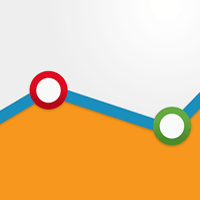Linguistic Analysis of Obama/McCain Websites

7 Billion People, a company that provides insight and behavioral analysis for websites, announced results from a linguistic analysis of the websites of Senators Obama and McCain. The analysis reveals that the candidates' websites take very different approaches in communicating their messages to voters. Analysis of the language, messaging, and information presentation on both candidates' websites yielded telling information about the mindsets of the political strategists behind the communications and how the candidates wish to be perceived during the race.
Are candidates potentially missing the opportunity to communicate effectively to those with different communication preferences?
From the release: Obama's website uses language that appeals to visitors that are typically goal-driven, optimistic and feel affinity with others as members of a group. It encourages social interaction and works best for those looking for peer discussions and references. The behavior of the website encourages access to many choices and options. In contrast, the McCain website is geared towards visitors that are driven by risk and problem avoidance and who primarily make decisions as individuals based upon "gut feel" and personal choice. McCain's site speaks best to those voters that are comfortable with process and orderly information presentation.
Mark Nagaitis, CEO of 7 Billion People, said "This analysis demonstrates how the design of a website and the use of language can influence the effectiveness of that site in communicating the desired message. Too many web designers underestimate the power of language in reaching the complete audience, not just their base." Key findings from the analysis include:
- The McCain website uses language that emphasizes risk and problem avoidance - such as the section on the Homeownership Resurgence Plan featured prominently on the home page during mid-October 2008 in the final weeks before the presidential election.
- By comparison, the Obama website offers voters key language on hope and opportunity as the primary focus, with risk items still present but secondary in nature.
- Democratic candidate Barack Obama's website is designed to appeal to people that use peer opinions and other references in their decision-making process. Obama's website speaks to those that see themselves as part of a group. (For example, the Obama Everywhere section on the home page includes links to popular social networking sites).
- Conversely, rival John McCain's website appeals to those people who make decisions based on gut-feeling, information and personal choice. McCain's website primarily speaks to the individual, not the group.
- Senator McCain's website presents information in a procedural, step-by-step fashion that appeals to analytical voters that feel comfortable with process and order - there is a clear path from the initial landing page that features Vice Presidential candidate Sarah Palin to the center panel of the website home page presenting topical videos denouncing his competitor. McCain's website may feel constrictive to some voters.
- By contrast, Senator Obama's website appeals to voters that prefer choice and exploration of all of the options available to them. The website contains a wide array of menu items and clickable section headings representing numerous choices for visitors that need to feel that they have explored all the options - including a Learn menu section providing backgrounds on the wives of Senators Obama and Biden, texting for campaign updates, Obama Mobile for ringtones and an official iPhone application for the Obama campaign. Obama may be missing the opportunity to talk to voters that prefer order and process on the site.









